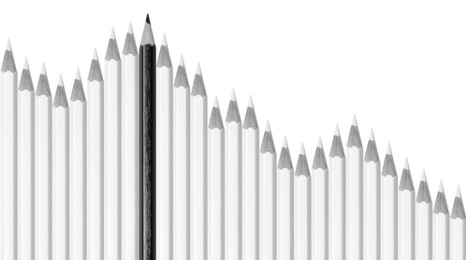Why public car retailer valuations are sliding

When the first Kerrigan Auto Retail Index was released at the end of March, the report said it was a bit premature to call the seven-year up-cycle in auto retail stocks over, but noted the handwriting was clearly on the wall.
“It is still too early to call the end of the cycle, but the public markets have clearly voted with their feet, driven by widespread concern about a slowing economy and concern about future profitability,” Kerrigan Advisors managing direct Ryan Kerrigan said in a news release when the inaugural report was released on March 31.
Well, a month-and-a-half later, public auto retailer valuations are really starting to feel the effects of gravity.
The KAR Index, which is a monthly index covering the seven publicly traded U.S. auto retailers, declined 9 percent in the last two weeks.
Specifically, the index had fallen to 452.29 when the market closed on Tuesday. Beyond the two-week change, the KAR Index is down 20 percent year-to-date and it’s off 36 percent from its peak on June 5, 2015, according to Kerrigan Advisors, which publishes the index.
The firm said three primary factors have driven the decline in May: high new-car inventory levels, compressed new-car gross margins and weak sales forecasts.
This follows what has been a topsy-turvy start to 2016.
“This is a continuation of a volatile first quarter,” Kerrigan Advisors managing director Erin Kerrigan said in a news release on the latest report. “After far outperforming the S&P 500 between 2009 and 2015 by over 700 percent, gravity is starting to set in.
“With sales growth slowing, auto retail will be a much more competitive industry going forward, likely resulting in lower earnings growth.”
Consider how the seven publics fared in Q1, for instance.
Even with revenues on the rise for most of these groups, five saw their net income decline, Kerrigan Advisors said — those being AutoNation, Lithia Motors, Group 1 Automotive, Asbury Automotive Group and CarMax.
The net income declines for AutoNation (down 14 percent) and Asbury (down 13.6 percent) were in the double-digit percentages.
New-car sales growth is also expected to dampen, with many analysts now projecting just 2-percent growth in the SAAR, according to the report. New-vehicle inventory has also proven to be problematic, the KAR Index report notes.
It cites comments that Group 1 chief executive officer Earl Hesterberg made to Reuters: "We simply have too much. More of the manufacturers are pushing more inventory. They are making more than they really need.”
Excess inventory and weaker sales forecasts are “having an impact on the public's forecasts, contributing to declines in the share prices,” Kerrigan Advisors indicates.
Jeff Dyke, executive vice president of operations at Sonic, is cited in the report as stating: “We continued to see gross profit compression in new vehicles and expect this to continue until inventory supply corrects to more normalized levels.”
High levels of inventory, along with online sales channels and greater consumer awareness, have contributed to a decline in new-car margins for these groups, the report said.
The report does show one bright spot, however.
“Although the public's share prices are depressed, there is a silver lining: Auto retailers have been taking advantage of the dip by repurchasing stock, allowing them to decrease the number of shares outstanding and increase their EPS,” Kerrigan said.

 View The Latest Edition
View The Latest Edition

